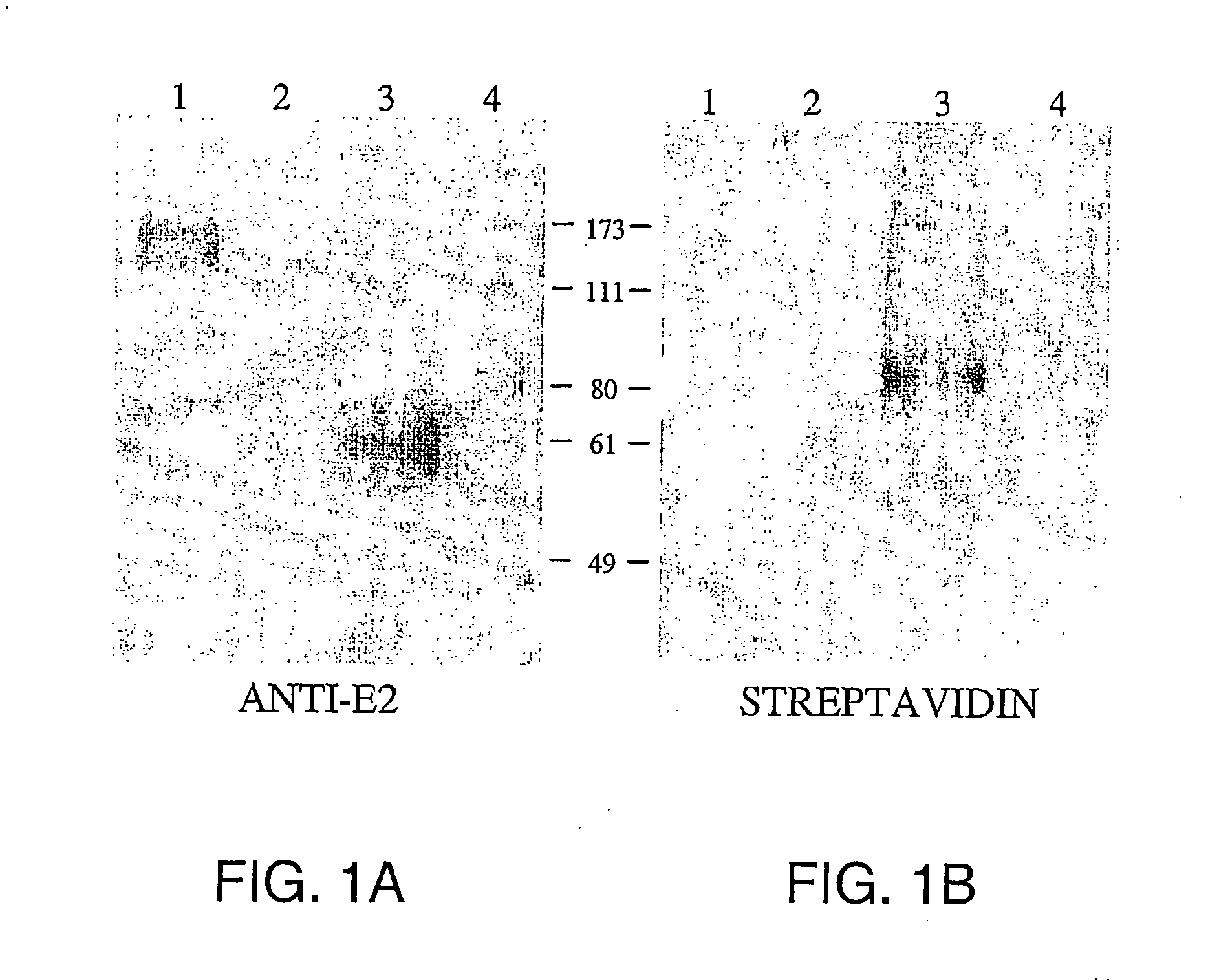Screening for hepatitis c virus entry inhibitors
a technology of hepatitis c virus and entry inhibitor, which is applied in the direction of instruments, drug compositions, peptides, etc., can solve the problems of slow progress into liver failure and cirrhosis, and achieve the effect of decreasing sr-bi activity or functional surface expression
- Summary
- Abstract
- Description
- Claims
- Application Information
AI Technical Summary
Benefits of technology
Problems solved by technology
Method used
Image
Examples
example 1
Materials and Methods
[0104] This example describes different materials and methods that were employed to study HCV E2 binding to SR-BI.
[0105] Cells
[0106] Molt-4 (human T-cell leukaemia) cells were obtained from the MRC ADP Repository. HepG2 (human hepatoma), HEK-293 (human embryonic kidney) BHK-21 (baby hamster kidney) and CHO (chinese hamster ovary) cell lines were obtained from the ATCC Repository. Cells were grown under standard conditions in presence of 10% fetal calf serum.
[0107] Cloning and Expression of E2 Glycoproteins
[0108] HCV E2 protein representative of genotype 1a (strain H) and genotype 1b (strain BK) were cloned into VIJnsTPA as described by Meola et al., J. Virol. 74:5933-5938, 2000. The cloned E2 fragment contains the coding sequence for E2 from amino acid 384 to amino acid 661 of the HCV polyprotein and a tag of 6 His at the C-terminal. 293 cells were transfected by calcium phosphate method. Recombinant proteins produced by transfected HEK 293 cells were colle...
example 2
Identification of SR-BI as an E2 Receptor
[0131] SR-BI was identified as an E2 receptor by examining the ability of E2 to bind to HepG2 cells, enriching for HepG2 cells having increased ability to bind E2, and determining that SR-BI binds E2. HepG2 cells were used to search for the E2 receptor because they were found to lack CDS81 and retain the ability to bind HCV E2.
[0132] Characterization of CD81-Independent Binding to E2 Glycoproteins
[0133] The ability of HepG2 cells to bind E2 independent of CD81 was determined using a FACS analysis. The absence of the CD81 molecule from HepG2 cells was determined using an anti-CD81 mouse monoclonal antibody, and a secondary antibody anti-mouse IgG1-phycoerythrin conjugate. Binding of recombinant E2 proteins derived from genotype 1a and 1b to cells was detected by antibodies reactive against a 6-His tag present in the recombinant proteins followed by incubation with an anti-mouse IgG1-phycoerythrin conjugate.
[0134] FACS analysis for CD81 exp...
example 3
Transfection of the SR-BI Coding Sequence in BHK-21 Cell Line
[0153] The coding sequence for the human SR-BI was amplified from RNA of HepG2s4 cells and cloned in a vector suitable for transfection. Transfection was performed in BHK-21 recipient cells since they were negative for E2 binding. FACS analysis of cells 24 hours after transfection indicated that SR-BI transfected cells acquired binding for E2 (FIG. 4).
PUM
| Property | Measurement | Unit |
|---|---|---|
| concentration | aaaaa | aaaaa |
| pH | aaaaa | aaaaa |
| volume | aaaaa | aaaaa |
Abstract
Description
Claims
Application Information
 Login to View More
Login to View More - R&D
- Intellectual Property
- Life Sciences
- Materials
- Tech Scout
- Unparalleled Data Quality
- Higher Quality Content
- 60% Fewer Hallucinations
Browse by: Latest US Patents, China's latest patents, Technical Efficacy Thesaurus, Application Domain, Technology Topic, Popular Technical Reports.
© 2025 PatSnap. All rights reserved.Legal|Privacy policy|Modern Slavery Act Transparency Statement|Sitemap|About US| Contact US: help@patsnap.com



